Jamestown's Slice of Finnish-American Modernism
Most of Jamestown's buildings date from the period 1890 to 1930 -- a time when the city's population more than quadrupled. But the city also has many notable buildings from the first decades after World War II -- the best of which, interestingly, are churches. After decades of hewing strictly to Medieval and Classical styles in church design, many local congregations followed the lead of churches nationally in reinterpreting the look and feel of religious architecture.
Perhaps the most refined local example of this pivot towards Modernism is Christ First United Methodist Church on Lakeview Avenue. Built in 1958 and designed by Harold E. Wagoner & Associates, one of the nation's leading mid-century church design firms, the church eschews many of the traditional ornaments of church design. Instead, it engages the eye through a contrast of textures (smooth limestone and a rusticated stone veneer) and the juxtaposing of straight, curving, angled, and stepped lines. These simple, well-arranged elements -- along with a sanctuary flooded by light from both clear and stained glass -- succeed in infusing the church with a sense of naturalism that pairs well with the sloping, arboreal landscape of the neighboring Lake View Cemetery.
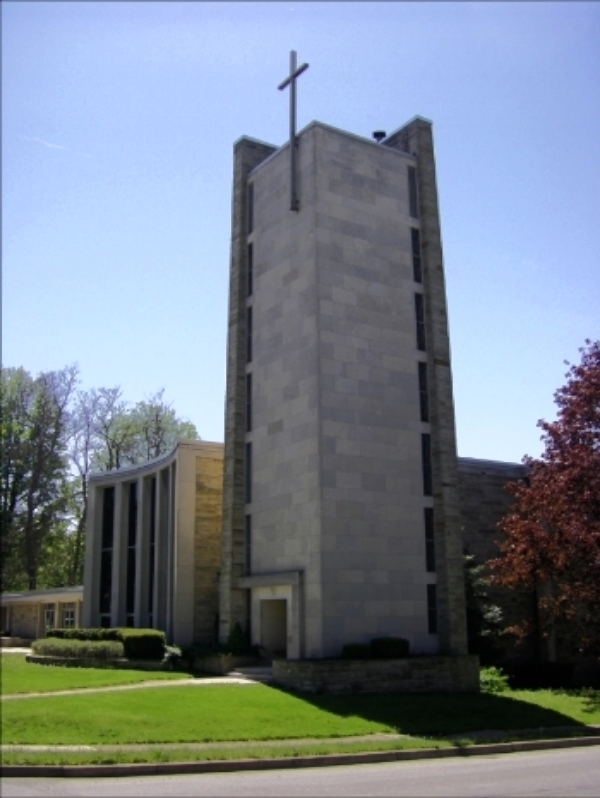
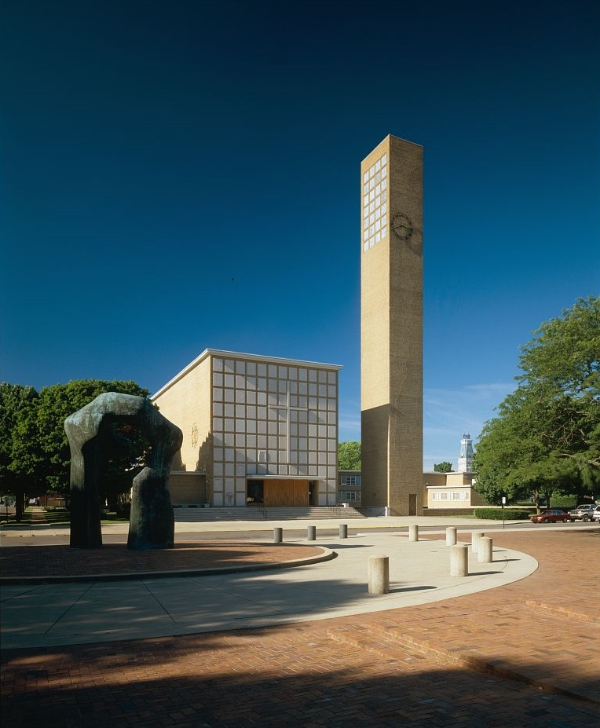
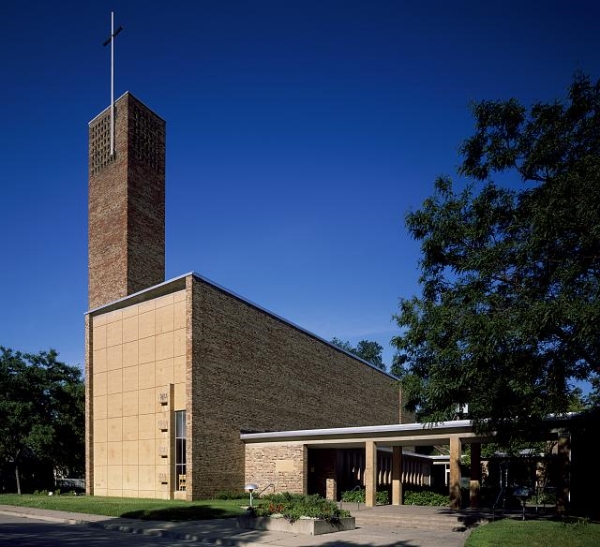
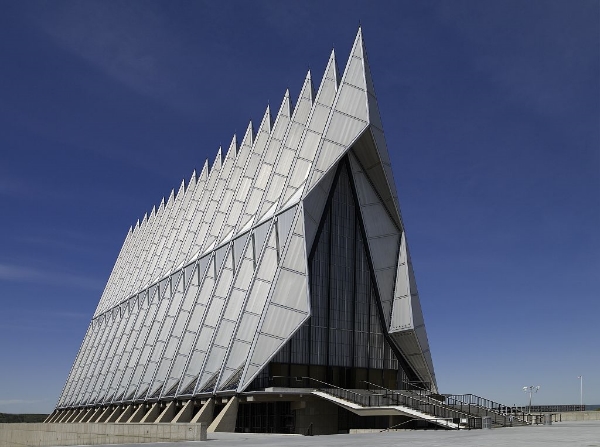
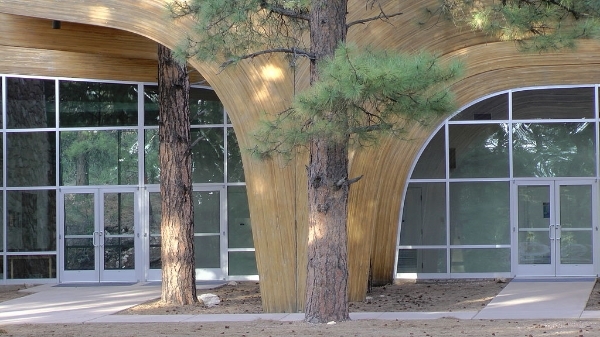
Inspiration for the Jamestown church is deeply rooted in the work of Finnish-American architect Eliel Saarinen, who, along with his son Eero, revolutionized American church design in the 1940s in their work on First Christian Church (1942) in Columbus, Indiana, and Christ Church Lutheran (1949) in Minneapolis. In both churches, the elder Saarinen fused his fondness for traditional materials and forms (honed in early 20th century Finland) with his Modernist inclination to strip a building to its fundamental elements -- a combination that made him famous in the U.S. for his entry in the 1922 competition for the Tribune Building in Chicago. Eliel and Eero Saarinen are best-known in Western New York for their Kleinhans Music Hall in Buffalo (1940).
Although the Jamestown church was inspired by the work of the Saarinens, architect Harold E. Wagoner was well-known not for any particular style preferences, but for delivering high-quality designs that appealed to the tastes of his clients -- which led to a portfolio containing very traditional and highly futuristic projects. Some of Wagoner's more well-known works include his contributions to the Cadet Chapel at the Air Force Academy (1962 -- a project led by Walter Netsch, Jr.) and the Shrine of the Ages (1970) on the rim of the Grand Canyon.
Although merely a coincidence, it is worth noting that the patron for the Saarinens' groundbreaking work in Columbus, Indiana (on First Christian Church and several other projects), was the Miller family who oversaw the growth of the Cummins Engine Corporation into a leading maker of diesel engines. Their enthusiasm for Modern design -- and their influence on institutions throughout that city -- made Columbus an epicenter of Modern architecture in the United States. Cummins opened its Jamestown engine plant, now the county's largest manufacturing plant, in 1974.
(Photos of First Christian Church, Christ First Lutheran, and Cadet Chapel are courtesy of the Library of Congress).

